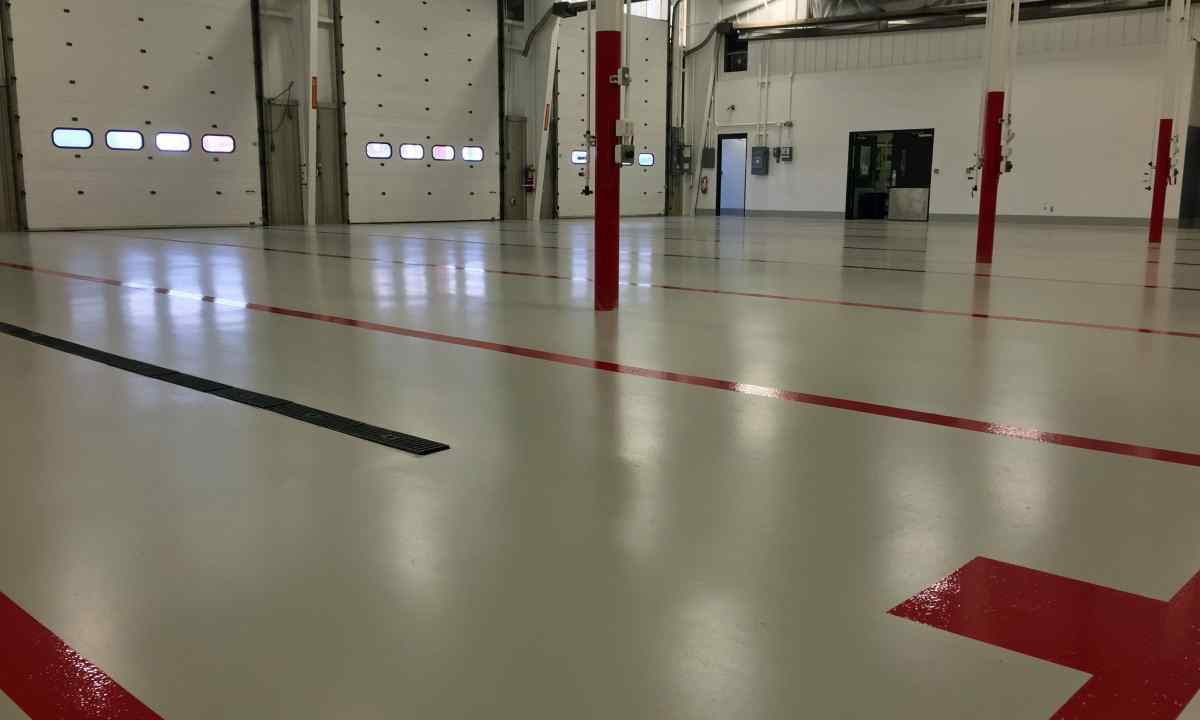Bulk floors – one of the new directions of dressing of rooms. Such floors are not simply functional, they are beautiful and convenient in use as they thanks to the increased crash-worthiness can be poured in rooms with high passability, have heating and even the anti-sliding covering.
Types of floors
There are several types of structure of floors which varies depending on the volume of the flooded area, passability and operating conditions.
Universal epoxy floor.
Polyurethane floor. It is, perhaps, the most shock-resistant option of bulk floor which is applied both in the form of independent covering, and as additional protection of the available floors (for example, parquet). Epoxy compound dvukmponentny. This option of covering is developed for the damp bases, the polymeric basis serves as excellent waterproofing.
Transparent floor on epoxy basis. It is used during creation of 3D floors or other design decisions.Kisloto- and alkaliproof epoxy floor. This type of bulk floors is used in places where the increased protection against chemicals is required (laboratories, medical institutions, the research centers).
As bulk floors become
After survey of the room and check determine by the level of horizontal error of the master how to do surface tie. At error from 5 mm use the rough dandy-roll with property of self-spreading. Less than 5 mm - are used the finishing dandy-roll. Having decided on it, masters start surface preparation. It is necessary to remove all dust, dirt, the flaking remains of the former floor: it is very important. If there are some roughnesses, then on future covering there can be cracks, besides the drawing will have defect. The next stage – primer, it is binding element, increases coupling and prevents emergence of bubbles. It is important to remember that the stacked mix needs to be isolated from walls. As the insulator there can be polyfoam or stopper 1 cm wide. Further the prepared mix is carefully mixed according to the instruction, let it stand and again mixed. Mix of the master is poured out rather narrow strips, by about 40 cm. Level the filled-in surface the needle roller, it is convenient in use and helps to get rid of bubbles.
Usually the drawing is poured out in form cliche, but professionals are able to afford creativity. It is curious to observe as the master draws not brush, but the huge syringe with pigments.
Advantages of bulk floor
Wear resistance, durability. At the correct mounting bulk floor will be resistant to change of temperatures, mechanical influences, the chemical compositions and hostile environment. Environmental friendliness. Bulk floor does not exude caustic smells and harmful evaporations even in the course of drying, it is convenient to use it in children's rooms, bedrooms, sanatoria and schools.
During drying of floor it is worth limiting hit of the sun to the room, to exclude emergence of drafts and possibility of temperature drop. Then the hardened floor will be tamperproof.
Ease in leaving. As in the bulk field there are no cracks and joints, dirt simply has no place to accumulate, it is easy to wash it. Such floors do not pass moisture, and even in a sense they are antibakterialna, besides under bulk floor it is convenient to mount the systems of heating. Longevity. At the correct filling the floors to you will serve very long, they are not afraid of chips, scratches, elevated pressure. Big scope for imagination, various drawings, landscapes, 3D images – all this allows to implement even the simplest bulk floor.

